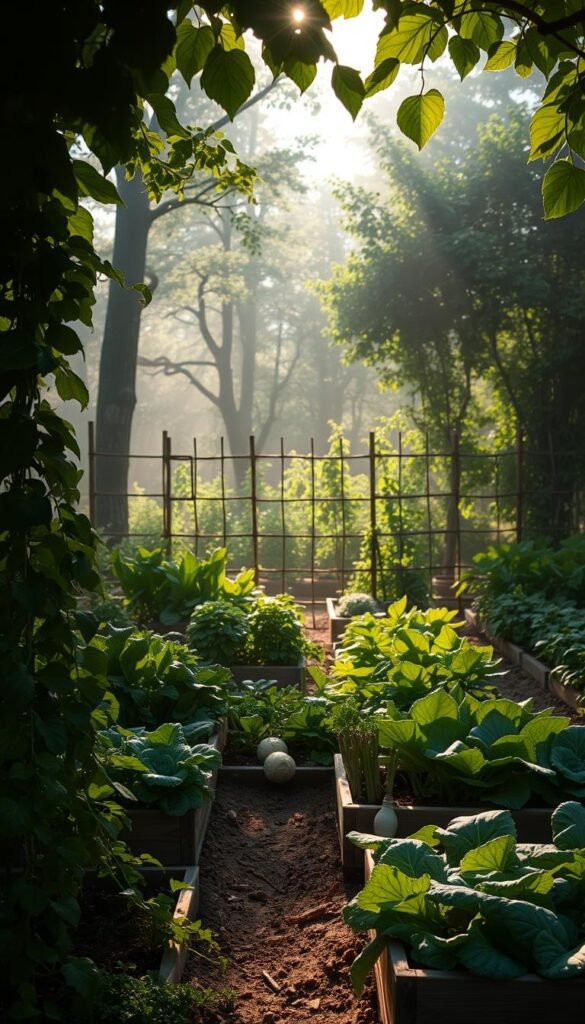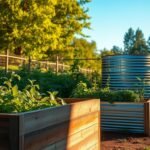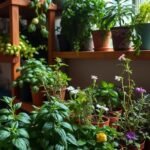Does your backyard get more shadows than sunlight? Don’t let dimmer conditions stop you from harvesting homegrown food. While popular picks like tomatoes crave full sun, many flavorful options flourish with just a few hours of light.
You might be surprised how leafy greens and root vegetables adapt to partial sun. These resilient plants often grow slower in shaded areas, developing sweeter flavors and softer textures. Cooler spots can even prevent delicate herbs from bolting too quickly.
Success starts with understanding your space. Track how sunlight moves across your planting area – even two hours of direct exposure makes a difference. Pair this knowledge with smart crop choices, and you’ll transform challenging corners into productive growing zones.
This guide reveals practical strategies for maximizing harvests in less-than-sunny yards. Learn which edible varieties naturally prefer filtered light, discover soil-boosting tricks, and explore creative solutions for light management. Let’s prove that delicious results don’t require perfect conditions!
Getting Started with Your Shade Vegetable Garden
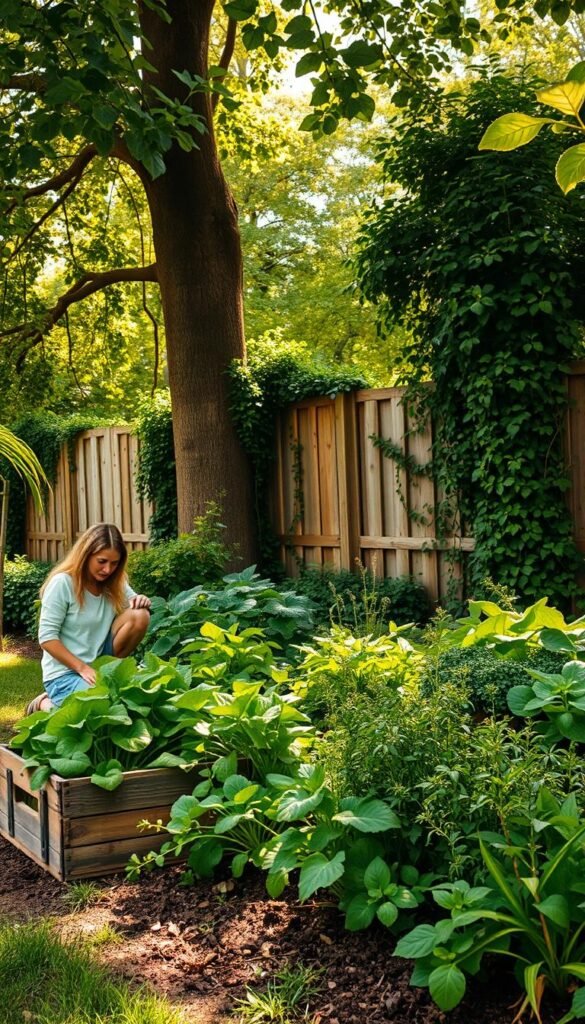
Your shaded spaces might hold more growing power than you realize. Begin by tracking how light patterns shift across your yard. Check morning versus afternoon exposure, and note seasonal changes as trees lose or regain leaves.
Look beyond obvious planting zones. That narrow strip beside your garage or the spot under deciduous trees could become prime real estate for leafy greens. Containers near walls let you chase sunlight like a botanical treasure hunt.
Three smart strategies boost success:
- Map sunlight every 2 hours through different seasons
- Test soil quality in potential growing areas
- Group plants by similar light needs
Remember, crops in filtered light often grow slower but develop richer flavors. Your harvests might be smaller than sun-drenched varieties, but they’ll taste uniquely vibrant. Adapt your expectations and celebrate what thrives in your specific garden conditions.
Understanding Your Garden’s Light Conditions
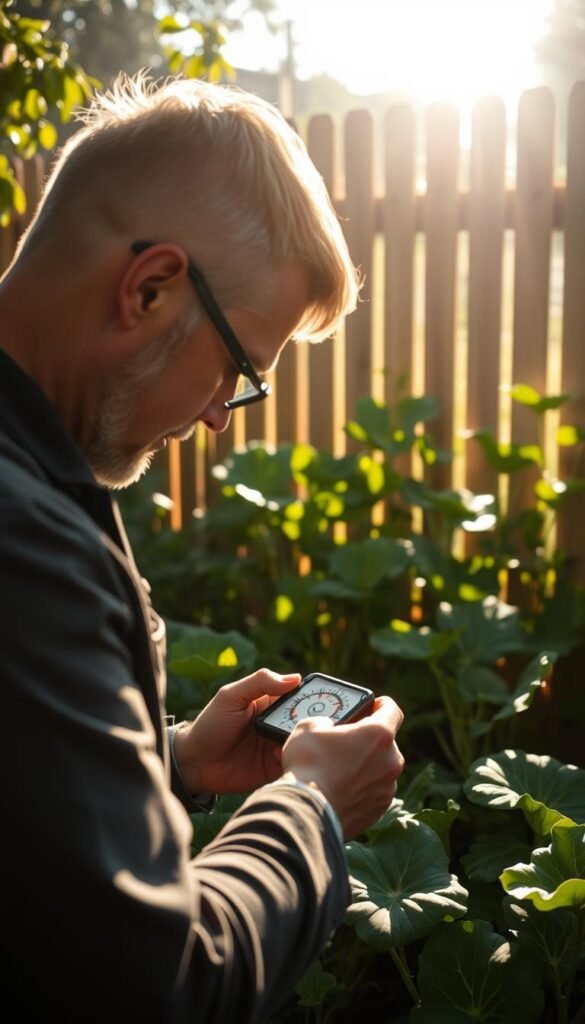
Your edible plants’ success depends on matching them to your space’s unique light patterns. Many gardeners overestimate shaded areas – even spots with brief sunbursts can support surprising growth when properly assessed.
Measuring Sunlight Hours
Track exposure using simple methods. Set phone reminders to check your space every two hours. Full sun zones get 6-8 hours of direct rays, while partial shade areas receive about three. Remember:
- Peak sunlight intensity occurs from 10 AM to 2 PM
- Morning light is gentler than afternoon rays
- Tree cover changes exposure seasonally
Identifying Dappled Versus Deep Shade
Watch how light dances through leaves. Dappled areas create moving patterns that protect plants from scorching. Deep shade stays constantly dim – perfect for mint but challenging for most edibles.
Your microclimates matter. That north-facing wall with morning sun? It’s a goldmine for cold-hardy greens. Spaces under deciduous trees become sunnier in winter, letting you rotate crops as light shifts.
Shade Vegetable Garden: Best Crops for Low-Light Growing Areas
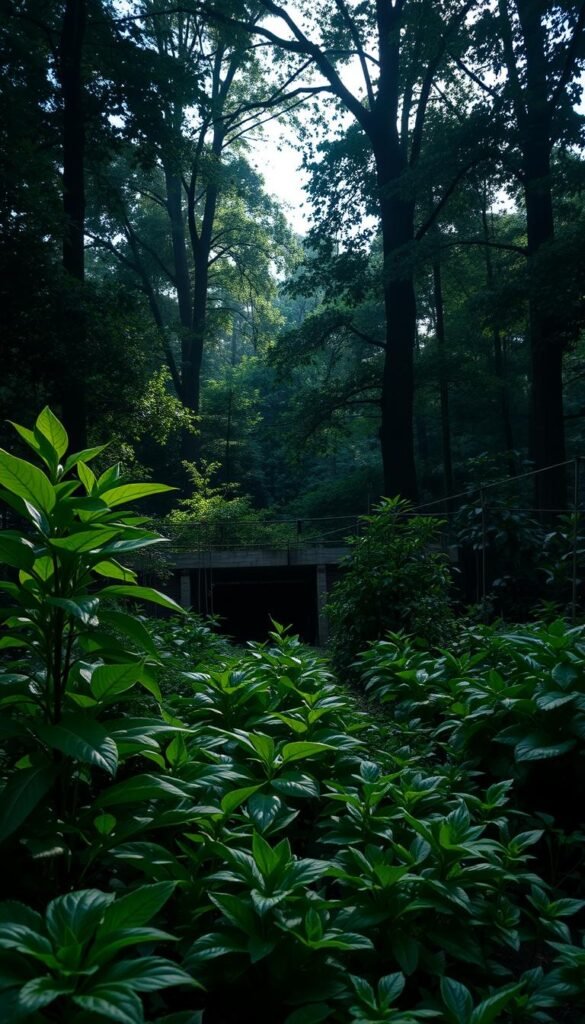
Not all edibles demand sunbathing spots to thrive. Three powerhouse groups adapt beautifully to limited light, turning dim corners into tasty food sources. Let’s explore these resilient growers that laugh in the face of shadowy challenges.
Brassica family members lead the charge. Broccoli and cauliflower develop sweeter flavors when spared from afternoon glare. Their leafy cousins like kale and bok choy stay tender longer under filtered light, avoiding the bitterness that plagues sun-stressed greens.
Dig deeper for underground treasures. Carrots and beets concentrate sugars in cooler soil, while radishes sprint to maturity before heat waves hit. These root wonders need just brief morning sun – perfect beneath deciduous trees or near east-facing walls.
Salad lovers rejoice! Lettuce and spinach bolt slower when protected from intense rays. Their delicate leaves maintain that crisp texture you crave in fresh wraps and sandwiches. Swiss chard adds color with rainbow stems that brighten up shadowy patches.
Remember: patience rewards shade gardeners. While growth happens slower, flavors intensify and textures improve. Track each plant’s progress weekly – you’ll notice plumper pods on pea vines and deeper hues on beet greens as they adapt to their luminous conditions.
Benefits of Gardening in Partial and Full Shade
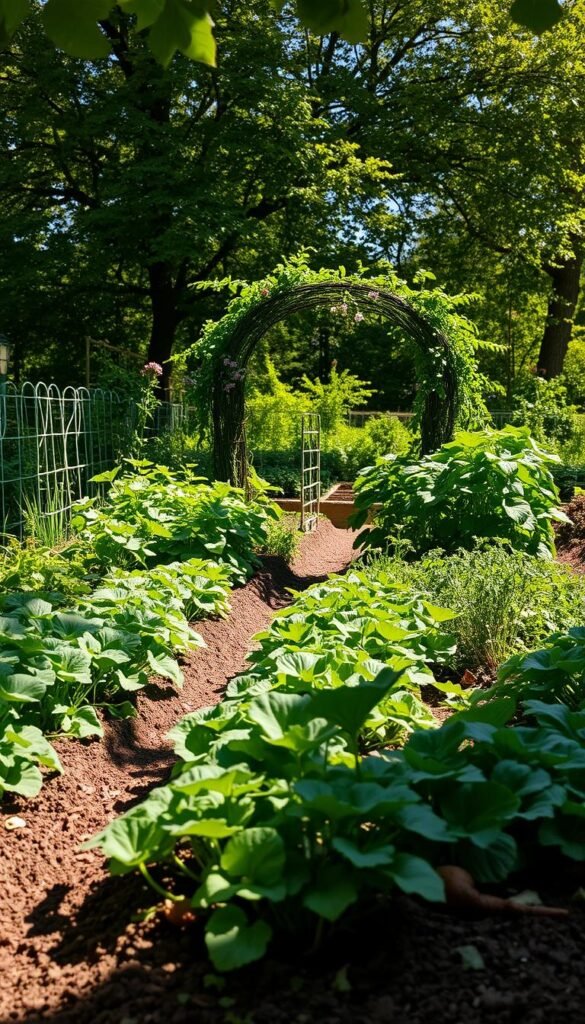
Partial sunlight conditions unlock hidden advantages you won’t find in blazing garden plots. Those filtered light areas protect delicate leaves from midday scorch, keeping greens crisp and vibrant. Broccoli and spinach thrive here – their florets stay tight, and foliage remains tender weeks longer than sun-baked versions.
Heat-sensitive plants gain superpowers in cooler spots. The gentler environment slows their biological clock, delaying the flowering stage that ruins leafy edibles. You’ll enjoy extended harvest windows for arugula and kale, with flavors deepening instead of turning bitter.
Water conservation becomes effortless. Moisture lingers in soil beneath tree canopies or near structures, meaning fewer soakings during dry spells. Your watering can gets a vacation while roots stay happily hydrated.
Seasonal surprises await too. Cool-weather crops like mustard greens flourish longer in autumn when grown under deciduous trees. As leaves fall, increasing sunlight warms the soil for late-season radishes or turnips. It’s nature’s perfect tag-team growing system.
Don’t overlook texture improvements either. Partial shade encourages softer, thicker foliage that’s ideal for fresh salads. Your basil won’t develop leathery leaves, and mint stays supple for summer cocktails. These subtle upgrades make every bite noticeably better.
Assessing and Adapting Your Garden’s Sun Exposure
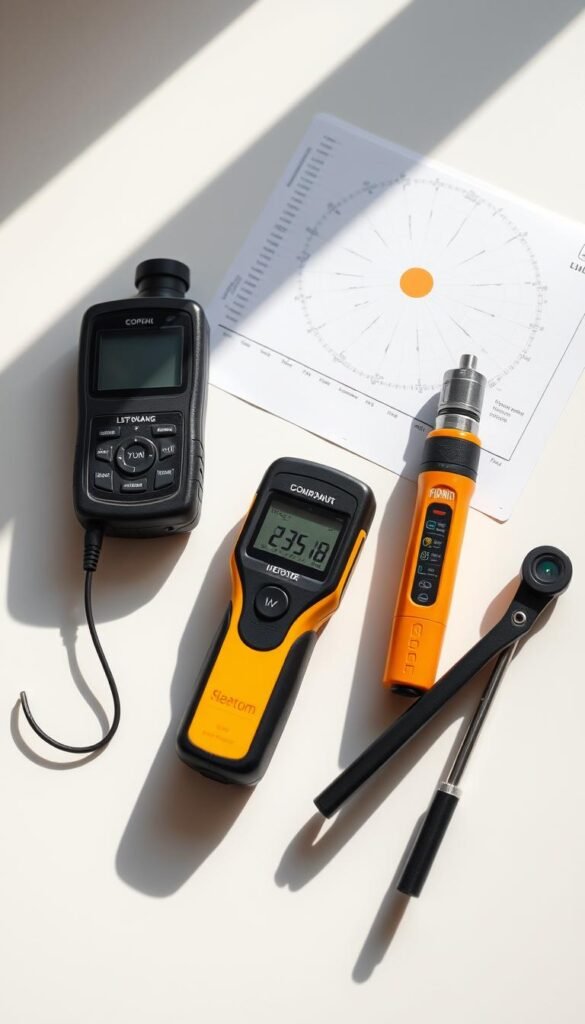
Your garden’s light personality changes more than you think. Those leafy maples creating summer shade might become winter sun channels. Track these shifts to unlock hidden planting potential across seasons.
Tools and Techniques for Light Measurement
Smartphone apps like Lux Light Meter turn your device into a digital sun tracker. For analog fans, try this simple method:
- Place wooden stakes every 2 feet in potential beds
- Mark ground shadows hourly with colored flags
- Chart patterns over 3 consecutive days
| Method | Accuracy | Best For |
|---|---|---|
| SunCalc App | 90% | Instant readings |
| Shadow Mapping | 85% | Visual learners |
| Time-Lapse Camera | 95% | Detailed analysis |
Seasonal Changes in Light Availability
Deciduous trees act like nature’s light dimmer switch. Their bare winter branches let through 40% more rays than summer foliage. Use this to your advantage:
| Season | Light Hours | Ideal Crops |
|---|---|---|
| Spring | 5-6 daily | Peas, Lettuce |
| Summer | 2-3 daily | Spinach, Mint |
| Fall | 4-5 daily | Radishes, Kale |
Notice how reflected light from white fences boosts growth? These micro-improvements let you push planting boundaries. Your “too dark” corner might become next season’s salad bowl!
Selecting Shade-Tolerant Vegetables
Some leafy superstars actually prefer cooler, dimmer spots to shine. While many plants stretch toward sunlight, certain varieties transform filtered light into flavorful rewards. The secret lies in choosing species that evolved under forest canopies or cool climates.
Cole Crops: Cool-Weather Champions
Broccoli and kale lead this hardy group that thrives with just 4 hours of daily light. These vegetables develop sweeter flavors when spared from afternoon glare. Their growth rate slows slightly, but you’ll notice plumper florets and tender leaves perfect for stir-fries.
Three key benefits make these crops ideal for limited-light spaces:
- Natural bolt resistance in cooler conditions
- Enhanced sugar production without bitterness
- Flexible harvest times (pick leaves early or wait for full heads)
| Crop | Light Needs | Days to Maturity | Flavor Boost |
|---|---|---|---|
| Broccoli | 4-6 hours | 55-70 | Nutty sweetness |
| Kale | 3-5 hours | 50-60 | Mellow earthiness |
| Kohlrabi | 4 hours | 45-55 | Crisp apple notes |
Cabbage grows well too, though heads stay looser than sun-grown versions. This actually makes leaves easier to separate for wraps or fermenting. When selecting varieties, look for terms like “slow bolt” or “cold-tolerant” on seed packets.
These adaptable plants let you maximize every corner of your growing space. With strategic planting, you’ll enjoy continuous harvests from spring through fall’s first frost.
Choosing Root Crops for Low-Light Areas
Even in limited light, the soil holds treasures waiting to be harvested. Roots thrive with just 3-4 hours of morning sun, making them perfect partners for spaces under trees or near east-facing walls. Their secret? Storing energy underground instead of chasing sunlight.
Carrots develop sweeter flavors when spared afternoon heat, while radishes sprint to maturity before summer’s peak. Bush beans add vertical interest near shaded fences, climbing upward to catch filtered rays. You’ll find potatoes grow smaller but creamier, and beets concentrate sugars in cooler earth.
Smart planting boosts results:
• Prioritize loose soil for straighter roots
• Mulch to retain moisture in drier spots
• Thin seedlings early to prevent crowding
Remember, these underground wonders adapt better than most vegetables. While their tops might look sparse compared to sun-grown plants, the real magic happens beneath the surface. A little patience rewards you with crisp, earthy flavors that shine in roasted dishes or fresh salads.
Your dimmer spaces can still deliver satisfying yields. By matching the right crops to your light patterns, you’ll uncover a world of texture and taste hiding in plain sight.
